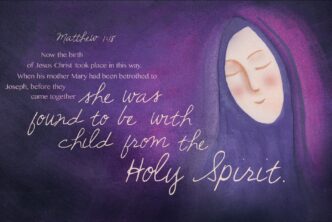Last week, I wrote about how to choose a Bible translation, recommending that you pair a highly precise translation with a highly readable one when you study. This week, I’d like to give you a quick guide to 11 of the modern English translations available on logos.com, to help you understand the strengths and history of each.
Lexham English Bible (LEB)
The Lexham English Bible, translated right here at Logos, is unique in that the translation decisions are made transparently with notes in your Faithlife Study Bible, explaining why difficult passages were translated the way they are. Download it together with the Faithlife Study Bible.
- Reading level: 9th grade
- Translation method: transparent hybrid
- Precision: ★★★★★
- Readability: ★★★
King James Version (KJV)
Originally published in 1611, the KJV has had a profound effect on the English language. The readability of the KJV has faded over time as language evolved.
- Reading level: 12th grade or above
- Translation method: verbal equivalence
- Precision: ★★★
- Readability: ★
New King James Version (NKJV)
A team of 60 scholars and church leaders created a modern-English equivalent of the KJV. Only slight changes were made, making the NKJV less poetic and a little more readable, but equally precise.
- Reading level: 11th grade
- Translation method: update of KJV (verbal equivalence)
- Precision: ★★★
- Readability: ★★
New American Standard Version (NASB)
The gold standard of precision translations, NASB is perfect for word-by-word study. But it has been criticized as hard to read because it lacks flow.
English Standard Version (ESV)
Dr. J. I. Packer provided oversight, leading to one of the most universally loved English translations. Dr. Packer called it, “the most important thing that I have ever done for the Kingdom.”
- Reading level: 11th grade
- Translation method: update of the RSV (verbal equivalence)
- Precision: ★★★★
- Readability: ★★★
New International Version (NIV)
The translation committee behind the NIV included members from several English speaking countries for better international acceptance, hence the name. The 2002 update, polarized the church with its use of gender-inclusive language. The most recent update, published in 2011, rolled back many of the controversial changes.
New International Reader’s Version (NIrV)
The NIV was modified to help early readers understand the Bible. It uses shorter words and sentences, and it includes more subheadings to break chapters into smaller chunks.
New Living Translation (NLT)
Revised from The Living Bible, the translation team used a thought-for-thought methodology (instead of word-for-word). The result is easy to understand but less precise.
- Reading level: 6th grade
- Translation method: dynamic equivalence
- Precision: ★★
- Readability: ★★★★★
The Amplified Bible (AMP)
The translation team delivers synonyms of critical words, often verbs, in parentheticals to draw out an application. I find this approach confusing, but I know many who love it.
- Reading level: 12th grade
- Translation method: verbal equivalence
- Precision: ★
- Readability: ★★
Holman Christian Standard Bible (HCSB)
A team of 90 scholars, predominantly Southern Baptist, released the HSBC in 2003. While a strong, well-balanced translation, it has been overshadowed by the ESV.
The Message
The Message is unique because it is the work of a single scholar, Eugene Peterson, and because it leans heavily toward readability. It has its critics, but The Message has never claimed to be anything other than a paraphrase with a heavy emphasis on readability.
- Reading level: 6th grade
- Translation method: paraphrase
- Precision: ★
- Readability: ★★★★★




